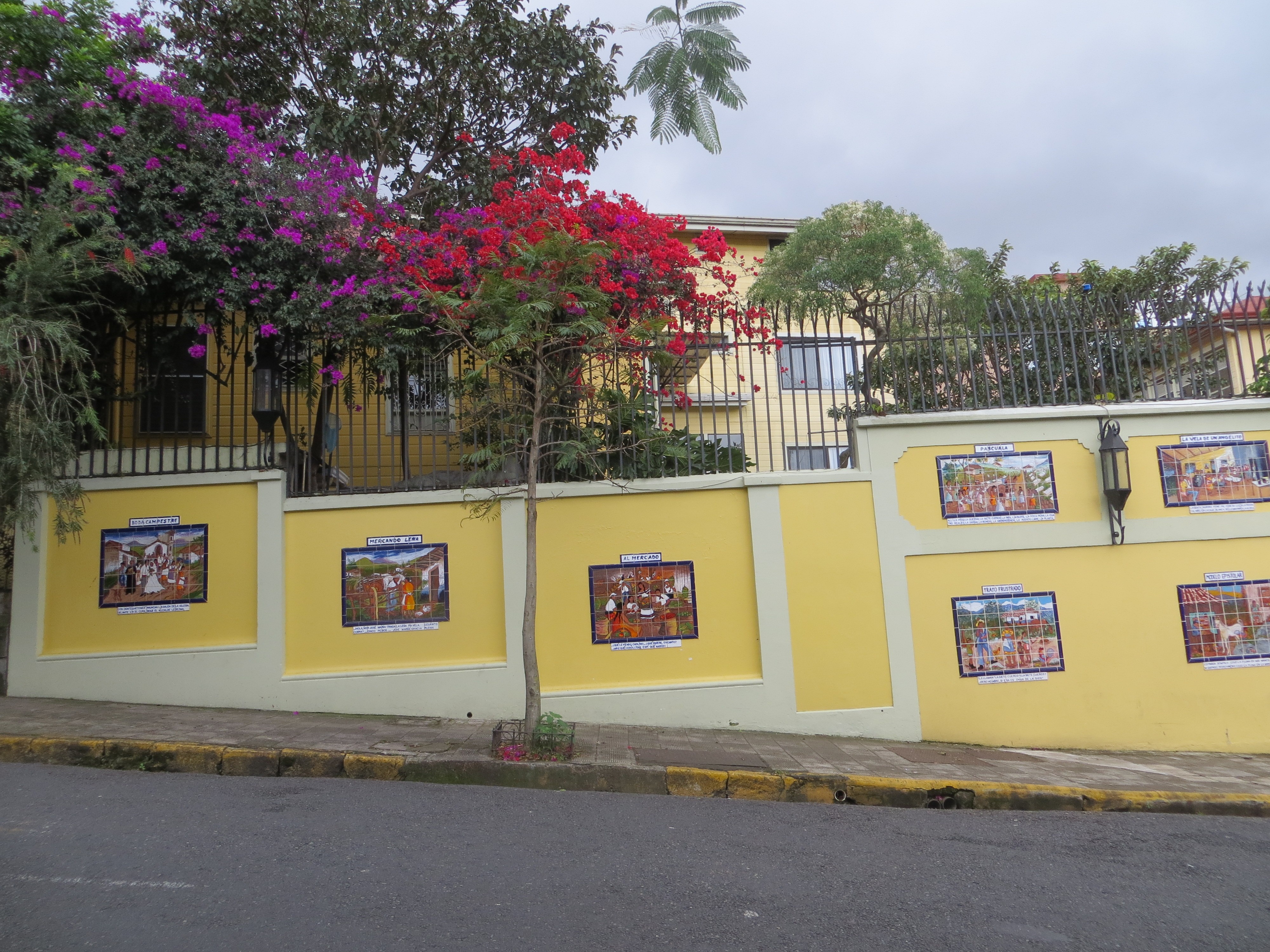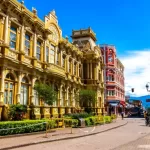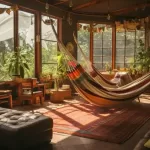Hand Painted Tiles of Barrio Amon
by Michael Miller
Many times I will tell visitors to Downtown San José, that they should take a walk through a neighborhood that was once the most prestigious in all of Costa Rica. That neighborhood is Barrio Amon.
There are a number of worthwhile things that you will discover on a walk through Barrio Amon: Some beautiful old buildings, a few small inviting hotels, a number of nice restaurants and a couple of fascinating art galleries. However, one of the biggest surprises to visitors is a form of public art that is found throughout the neighborhood: Hand-Painted Tiles.
What I am talking about are ceramic tiles. These ceramic tiles are painted and then glazed over to protect the art. These “sets” of tiles are then mounted on walls, often exterior walls, for the public to enjoy.
Hand-painted ceramic tiles is an art form that has a long history and can be found in many cities around the Mediterranean. This tradition took hold in Spain and Portugal in the 1300’s, and it came to the Americas as those nations settled the New World.
Here in Costa Rica, hand-painted tile art became popular when landowners from the countryside achieved enough affluence to build townhomes in the capital city of San José. By the second half of the 1800’s, these “coffee barons” started building beautiful houses in Barrio Amon and the adjacent Barrio Otoya.
Hand-painted tile art is everywhere in this neighborhood. It is on the exterior walls of private homes, and on the walls of hotels and restaurants. You can find it on the walls of office buildings. Sometimes it is hidden in private alcoves. Some of the art will jump out at you as you walk the neighborhood, and some of it you will have to look for.
Perhaps the best way to see the hand-painted tile art of Barrio Amon is to start at the Hotel don Carlos. At this lovely boutique hotel, you will find tile art both inside and out.
On the exterior wall of the Hotel don Carlos facing Avenida 9, you will find a collection of eight tile paintings that depict scenes from the Costa Rican countryside from an earlier era. These paintings were inspired by a book of stories about life in rural Costa Rica during the late 1800’s. The book is called Concherias by Aquileo Echeverria, and it is a considered a classic of Costa Rican literature. The book is available in the fine gift shop in the Hotel don Carlos.
Inside the Hotel don Carlos, you will find several other examples of tile art. The most significant of these is a huge work that shows all the prominent buildings in the north east section of Downtown San José. Many of those buildings no longer exit. The work was the creation of artist Mario Arroyabe, who is from Colombia. Lupita Balser de Weiler, the owner of Hotel don Carlos, told us how she and many local experts aided the artist with old photographs and descriptions of the buildings.
Next door to the Hotel don Carlos is a private home that is protected by an interesting brick wall. On the wall, you will find another collection of hand-painted tiles with a literary theme. These are scenes from the Spanish classic Don Quixote de la Mancha. They were painted by the nation’s first Minister of Culture, Guido Saenz, who is also famous for converting the passenger terminal of the old Sabana Airport into the Costa Rican Museum of Art.
Part of the fun of walking around Barrio Amon is discovering examples of tile art. Down the hill from the Hotel don Carlos is another small hotel called the Dunn Inn. Next door you will see a pair of tile art pieces that show scenes of life in Costa Rica; one of them shows a man selling medicinal herbs in the mercado, and the other shows men standing at a bar in a cantina.
Another surprise that you might discover are two examples of tile art on the exterior wall at the rear of the Sportsmen’s Lodge. One is a reproduction of a popular painting with an old ox cart next to a farm house, and the other is a religious image showing the Blessed Virgin.
Religion is a popular theme for tile art. If you walk to Avenida 7, across the street from the Casa Amarilla, there is an ornate old guard shack at Parque España. The guard shack is decorated with tile art from top to bottom, and on each side you will see depictions of religious images.
If you continue walking up Avenida 7, across from the Mexican Embassy, there is a piece of tile art that is somewhat painful to see. It depicts the young Indian girl who discovered a small black statue of the Virgin Mary in, what is now, the city of Cartago. This statue, known as “La Negrita,” is immensely important to the Catholic faithful in Central America, and it was on this spot that the magnificent Basilica of Our Lady of the Angels was built.
The distressing thing about this piece of tile art is that it is mounted on a wall behind some black steel bars. If you look at this picture, you will see several places where it has been badly damaged by vandals. My, how sad. Sad on so many levels. Fortunately, the steel bars keep this piece of art safe from further damage.
Even with some damage, the hand-painted ceramic tile art of Barrio Amon is a good reason to take a walk through this historic neighborhood. As I have said many times before, San José is a city full of surprises. It is all part of “the real San José.”
To find Barrio Amon, it is the neighborhood immediately behind high-rise tower of the Holiday Inn in Downtown San José. If you wish to begin your walk at the Hotel don Carlos, you will find it at the corner of Avenida 9 and Calle 9.
I would like to thank La Señora Lupita Balser de Weiler, the owner of the Hotel don Carlos. She was most generous with her time and she has a wealth of knowledge of the tile art of Barrio Amon. Her enthusiasm for all forms of Costa Rican art is contagious.
And a very special thank you to tour guide and interpreter Nury Mora-Vargas, who once again has proven to be an invaluable help.
Michael Miller is the author of the first and only guide book that focuses on Downtown San José, Costa Rica, titled The Real San José. Paperback copies are available for sale in the gift shop of the Hotel don Carlos. An electronic version of The Real San José is available at Amazon/Kindle.
Your questions and comments are always welcomed. You may contact Michael directly by email: therealsanjose@gmail.com. You can see other stories that Michael has written about Downtown San José at his website: TheRealSanJose.com




